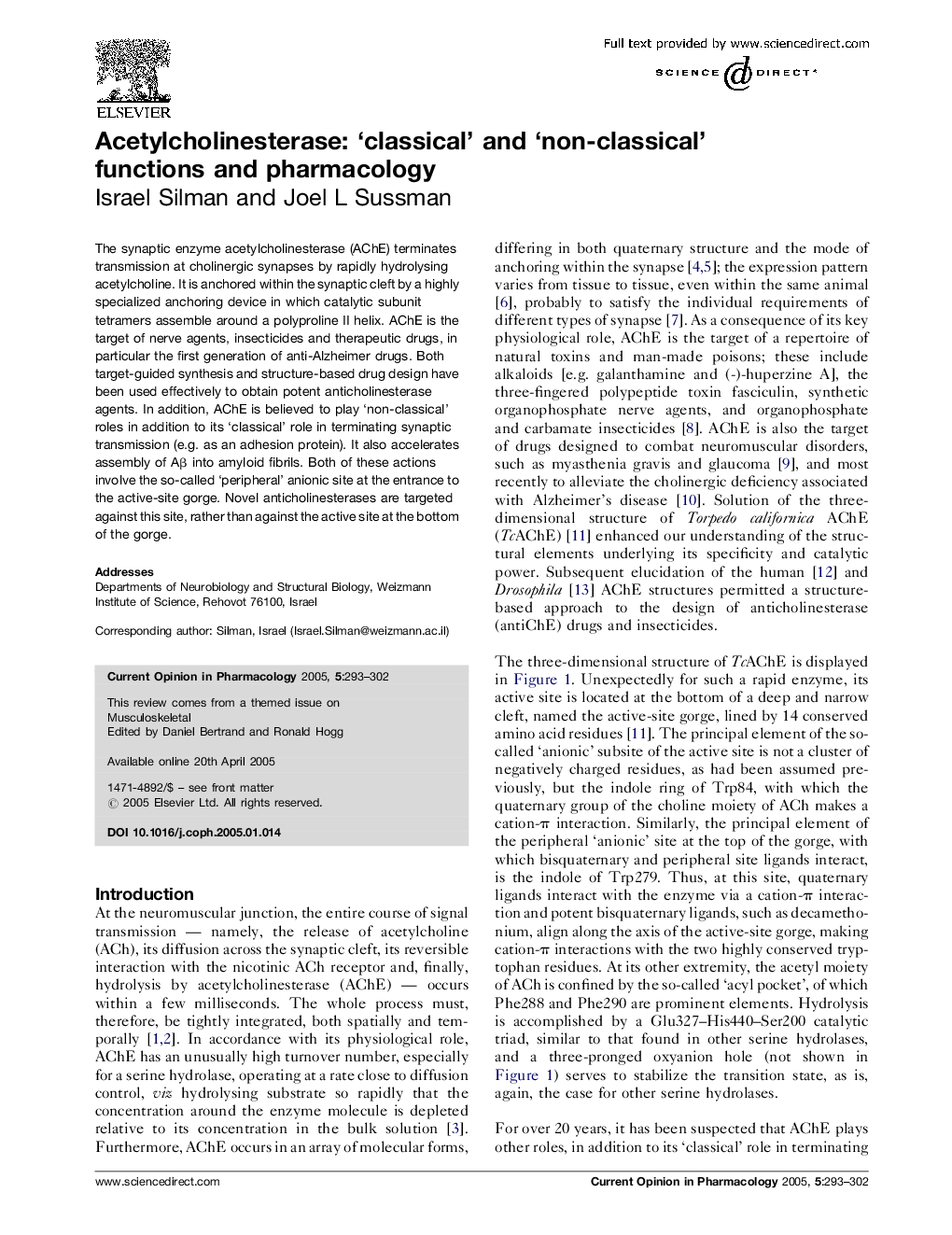| Article ID | Journal | Published Year | Pages | File Type |
|---|---|---|---|---|
| 9006531 | Current Opinion in Pharmacology | 2005 | 10 Pages |
Abstract
The synaptic enzyme acetylcholinesterase (AChE) terminates transmission at cholinergic synapses by rapidly hydrolysing acetylcholine. It is anchored within the synaptic cleft by a highly specialized anchoring device in which catalytic subunit tetramers assemble around a polyproline II helix. AChE is the target of nerve agents, insecticides and therapeutic drugs, in particular the first generation of anti-Alzheimer drugs. Both target-guided synthesis and structure-based drug design have been used effectively to obtain potent anticholinesterase agents. In addition, AChE is believed to play 'non-classical' roles in addition to its 'classical' role in terminating synaptic transmission (e.g. as an adhesion protein). It also accelerates assembly of Aβ into amyloid fibrils. Both of these actions involve the so-called 'peripheral' anionic site at the entrance to the active-site gorge. Novel anticholinesterases are targeted against this site, rather than against the active site at the bottom of the gorge.
Related Topics
Life Sciences
Neuroscience
Cellular and Molecular Neuroscience
Authors
Israel Silman, Joel L Sussman,
